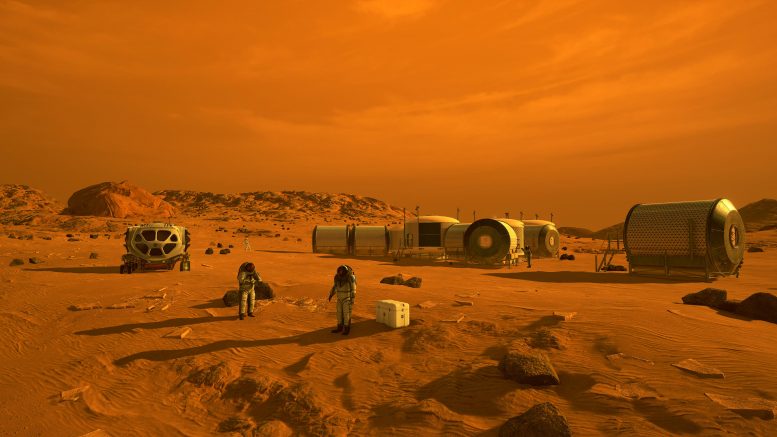
This model may serve as the basis for future investigation into how well the human cardiovascular system can tolerate prolonged space travel and life on Mars.
A mathematical model created by space medicine experts at The Australian National University (ANU) could be used to predict whether an astronaut would be able to safely voyage to Mars and carry out their mission responsibilities once there.
The ANU researchers tested the effect of extended zero gravity exposure on the cardiovascular system to see whether the human body can endure Mars’ gravitational forces, which aren’t as powerful as on Earth, without fainting or experiencing a medical emergency while stepping out of a spacecraft.
The model may be used to examine the effects of short and long-term space travel on the body, and it could be a key piece of the puzzle in helping people land on Mars.
Key Concerns for Mars Missions: Heart and Blood Vessel Changes
Dr. Lex van Loon, a Research Fellow from the ANU Medical School, said although there are multiple risks associated with traveling to Mars, the biggest concern is prolonged exposure to microgravity – near zero gravity – which, combined with exposure to damaging radiation from the Sun, could cause “fundamental” changes to the body.
“We know it takes about six to seven months to travel to Mars and this could cause the structure of your blood vessels or the strength of your heart to change due to the weightlessness experienced as a result of zero gravity space travel,” Dr van Loon, who is also the lead author of the paper, said.
“With the rise of commercial space flight agencies like Space X and Blue Origin, there’s more room for rich but not necessarily healthy people to go into space, so we want to use mathematical models to predict whether someone is fit to fly to Mars.”
Fluid Redistribution and the Risk of Fainting
According to Dr. Emma Tucker, an astronomer and emergency medicine registrar, extended exposure to zero gravity might lead the heart to grow lazy since it doesn’t have to work as hard to overcome gravity in order to pump blood throughout the body.
“When you’re on Earth, gravity is pulling fluid to the bottom half of our body, which is why some people find their legs begin to swell up toward the end of the day. But when you go into space that gravitational pull disappears, which means the fluid shifts to the top half of your body and that triggers a response that fools the body into thinking there’s too much fluid,” Dr. Tucker said.
“As a result, you start going to the toilet a lot, you start getting rid of extra fluid, you don’t feel thirsty and you don’t drink as much, which means you become dehydrated in space. This is why you might see astronauts on the news faint when they step foot on Earth again. This is quite a common occurrence as a result of space travel, and the longer you’re in space the more likely you are to collapse when you return to gravity. The purpose of our model is to predict, with great accuracy, whether an astronaut can safely arrive on Mars without fainting. We believe it’s possible.”
The Challenge of Autonomous Operations on Mars
Because of the communication delay between Mars and Earth, astronauts must be able to perform their tasks without immediate help from support teams. According to Dr. van Loon, this window of radio silence varies depending on the positioning of the Sun, Earth, and Mars in their orbits, but it can last at least 20 minutes.
“If an astronaut faints when they first step out of the spacecraft or if there’s a medical emergency, they’ll be nobody on Mars to help them,” Dr van Loon said.
“This is why we must be absolutely certain the astronaut is fit to fly and can adapt to Mars’ gravitational field. They must be able to operate effectively and efficiently with minimal support during those crucial first few minutes.”
To simulate the hazards of traveling to Mars, the model employs an algorithm based on astronaut data acquired from previous space expeditions, including the Apollo missions.
Despite the fact that the space data used to influence the model’s parameters is taken from middle-aged and well-trained astronauts, the researchers want to improve its capabilities by modeling the effect of prolonged space flight on relatively unhealthy people with pre-existing cardiovascular problems. This would provide the researchers with a more complete picture of what would happen if an “everyday” individual traveled into space.
Reference: “Computational modeling of orthostatic intolerance for travel to Mars” by Lex M. van Loon, Anne Steins, Klaus-Martin Schulte, Russell Gruen, and Emma M. Tucker, 9 August 2022, npj Microgravity.
DOI: 10.1038/s41526-022-00219-2
Never miss a breakthrough: Join the SciTechDaily newsletter.